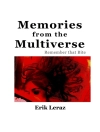Pierre: or, The Ambiguities (1852) is a novel by American writer Herman Melville. Published the year after Moby-Dick—a critical and commercial failure—Pierre: or, The Ambiguities is a psychological novel in the tradition of Gothic fiction. Melville struggled to find a publisher who would pay him in advance for the book, and its appearance prompted widespread ridicule and condemnation in the press, with some critics claiming that Melville himself had gone mad. The novel plunged Melville deeper into financial ruin, and all but ensured that his next novels, Israel Potter and The Confidence-Man, would be his last.
Pierre Glendinning Jr. is a nineteen-year-old heir who lives with his widowed mother at their family manor in upstate New York. Engaged to the beautiful and respectable Lucy Tartan, Pierre stands to inherit—with his mother’s approval—a life of comfort and wealth. When he meets a young woman named Isabel Banford, his father’s illegitimate daughter, Pierre devises a plan he believes will solve everyone’s problems: he will marry Isabel, who will inherit her share of their father’s wealth, thereby preserving his father’s honor and sparing his mother the embarrassment of her husband’s infidelity. Pierre marries Isabel in secret, and when he tells his mother is thrown out of the house and cut off from his family for good. He moves with Isabel to New York City, where he hopes to make a life for himself as a writer, but the sins of the past refuse to let him rest as he wrestles with his choices and discovers the true nature of his seemingly good intentions.
This edition of Herman Melville’s Pierre: or, The Ambiguities is a classic of American literature reimagined for modern readers.
Since our inception in 2020, Mint Editions has kept sustainability and innovation at the forefront of our mission. Each and every Mint Edition title gets a fresh, professionally typeset manuscript and a dazzling new cover, all while maintaining the integrity of the original book.
With thousands of titles in our collection, we aim to spotlight diverse public domain works to help them find modern audiences. Mint Editions celebrates a breadth of literary works, curated from both canonical and overlooked classics from writers around the globe.
เกี่ยวกับผู้แต่ง
Herman Melville (1819-1891) was an American novelist, poet, and short story writer. Following a period of financial trouble, the Melville family moved from New York City to Albany, where Allan, Herman’s father, entered the fur business. When Allan died in 1832, the family struggled to make ends meet, and Herman and his brothers were forced to leave school in order to work. A small inheritance enabled Herman to enroll in school from 1835 to 1837, during which time he studied Latin and Shakespeare. The Panic of 1837 initiated another period of financial struggle for the Melvilles, who were forced to leave Albany. After publishing several essays in 1838, Melville went to sea on a merchant ship in 1839 before enlisting on a whaling voyage in 1840. In July 1842, Melville and a friend jumped ship at the Marquesas Islands, an experience the author would fictionalize in his first novel, Typee (1845). He returned home in 1844 to embark on a career as a writer, finding success as a novelist with the semi-autobiographical novels Typee and Omoo (1847), befriending and earning the admiration of Nathaniel Hawthorne and Oliver Wendell Holmes, and publishing his masterpiece Moby-Dick in 1851. Despite his early success as a novelist and writer of such short stories as “Bartleby, the Scrivener” and “Benito Cereno, ” Melville struggled from the 1850s onward, turning to public lecturing and eventually settling into a career as a customs inspector in New York City. Towards the end of his life, Melville’s reputation as a writer had faded immensely, and most of his work remained out of print until critical reappraisal in the early twentieth century recognized him as one of America’s finest writers.












